"EDWARD E. JACOBSEN, of 9 East 41st Street, New York City, won the fourth prize in the non-dramatic division for his short study of New York City, "Our Metropolis." Mr. Jacobsen also submitted a drama, "What Does It Matter?," which was given an honorable mention. His study of Manhattan was deemed of greater merit, presenting some fine photography and excellent choice of subject. Both films were in 16 millimeter width, Mr. Jacobsen using a Bell and Howell Filmo. Mr. Jacobsen, by the way, is an art director of an advertising agency." Photoplay, Nov. 1929, 86
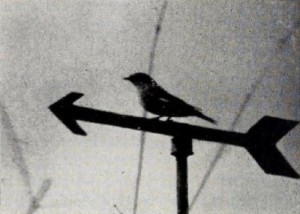
"Emma L. Seely's patience, good judgment and technical skills have made Out of Door Life in Ohio an amateur accomplishment of major importance. Her interest in her subject illuminates this well authenticated and minutely documented study of the bird life, in particular, and flora and fauna generally in her native state. Mrs. Seely's sure and expert grasp of cinematographic problems in nature filming made the successful recording of her beloved subjects possible. Finally, her able organization of the resulting footage made for a presentation at once impressive, informative and entertaining." Movie Makers, Dec. 1951, 410.
"Paradise Honolulu: Nobuo Miyaoka, using a Cine Special camera and Kodachrome film, has documented contemporary life in Honolulu as have perhaps few cine cameraists in recent years. The picture is essentially newsreel in style and depends upon titles to convey that which is not clear in the pictorial action. But interest is sustained in the careful selection of subject matter and the manner in which it has been photographed. A highlight is the fine night photography in color of Honolulu's annual lantern parade." American Cinematographer, May. 1951, 190.
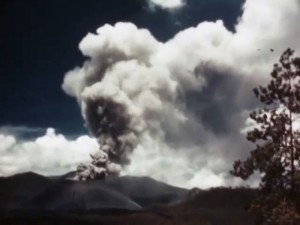
"Paracutin, by Ralph E. Gray, is probably the most complete and accurate record of Mexico's new world wonder yet to be produced on 16mm. film, even possibly in the 35mm. medium. Mr. Gray, long one of Mexico's most devoted American friends, was on the scene soon after the eruption broke out in a peasant's cornfield, and he has made four further trips to record changes and progress in the volcano's life. His superbly filmed footage presents the dramatic subject from every available viewpoint — even to seemingly dangerous closeups of the fiery rim — but it has been edited and is presented in strictly accurate chronological order. Human interest scenes of the effect of the giant cauldron on native life are plentiful and appealing, even to a striking sequence of the heavy dust deposits along the streets of Uruapan, more than thirty miles from the eruption. Paracutin is today a dramatic study of beauty and power; it should prove in the future to be a unique and valuable scientific record." Movie Makers, Dec. 1943, 474.
"George Kiehl's visit to Paris took him to many of the places of interest in the visitor. His fast moving travelog takes us through the main streets and some of the old sophisticated areas. We begin with the landmark of the 1889 Exhibition, followed by fountains, facades, monuments of marble and bronze, parades, tired souls asleep on the street, art centers, castles, water excursions, and, not to forget, Moulin Rouge and other night spots with choice centers of attraction" PSA Journal, Nov. 1958, 48.
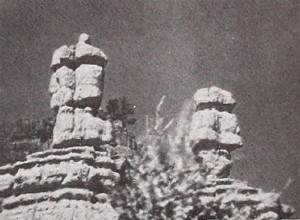
"Parks of Paradise was originally intended as a 2000 foot pictorial travelog that would cover every national park and monument in the United States, but travel conditions enforced a limitation, so Norris Smitley has confined the scope to include only the national parks of the Southwest, permitting a more detailed presentation of the material used. Many unusual scenes of popular subjects are shown in the picture, which is further distinguished by beautiful color and meticulous cinematography." Movie Makers, Dec. 1943, 478.
"In Peasants, Konstantin Kostich, ACL, has produced a sympathetic and withal entertaining picture of the people of village and farm land in Czechoslovakia and Roumania. Expert photography, an understanding choice of camera angle and workmanlike sequences mark this interesting film study and serve as a vehicle for its outstanding quality — a sincere and attractive presentation of the people as they are, not as they might be made to appear for the sake of motion picture cleverness. Mr. Kostich needs rely only on his own skill and can afford to neglect making a point of what, in dress or custom, might appear to be a strange peculiarity to another people. Unlike many professional travel photographers, he can avoid these obvious aids to sustain interest and can present his peasants on the friendly basis of real understanding. This does not mean that he does not tell a real story; it simply means that he tells it fairly and sincerely and, hence, beautifully." Movie Makers, Dec. 1934, 534.
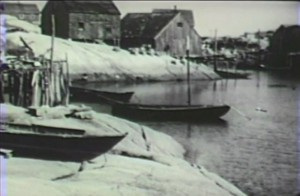
"In Ultima Thule and Peggy's Cove, produced by Edward A. Bollinger, ACL, and Mrs. Bollinger, one finds what must be the ultimate in beautiful scenic photography, magically infused throughout with a sensitive feeling for the relationship of ordinary people to their natural backgrounds. Beyond the veritable perfection of many of the scenes in these pictures it seems impossible for camera and film to go, even when guided by skill and imagination as superb as Mr. and Mrs. Bollinger's. Compositions, cutting and sequence structure are incisive and stirring, while the title wordings and execution leave little to be desired in suave good taste. The two subjects are first and last reels of a four reel study of Nova Scotia, in which, it is understood, Mr. Bollinger has done the camera work and his wife the editing and titling. It is a happy combination, from which have resulted documentary reels of magnificent skill and breathtaking beauty." Movie Makers, Dec. 1935, 550.
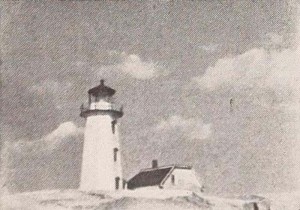
"Francis M. Hirst's Peggy's Cove is 8mm. scenic cinematography of a very fine kind. This familiar movie subject for personal filmers is given added interest and beauty by Mr. Hirst's handling of it. He has not departed from the high standard set by Edward Bollinger in the first of the many Peggy's Coves to be offered for Ten Best. While Mr. Bollinger had the advantage of a larger frame size, Mr. Hirst had the added factor of color, and he makes the most of it, hurdling the problem of distant shots in 8mm. Kodachrome in gallant fashion. Here we have the sincere recording, by an artist with an instant eye for beauty, of a locale that will, for years to come, invite the attention of filmers who wish to match their art against a distinguished subject." Movie Makers, Dec. 1939, 635.
Total Pages: 37